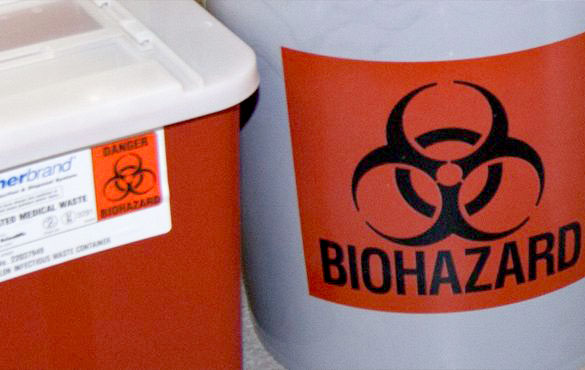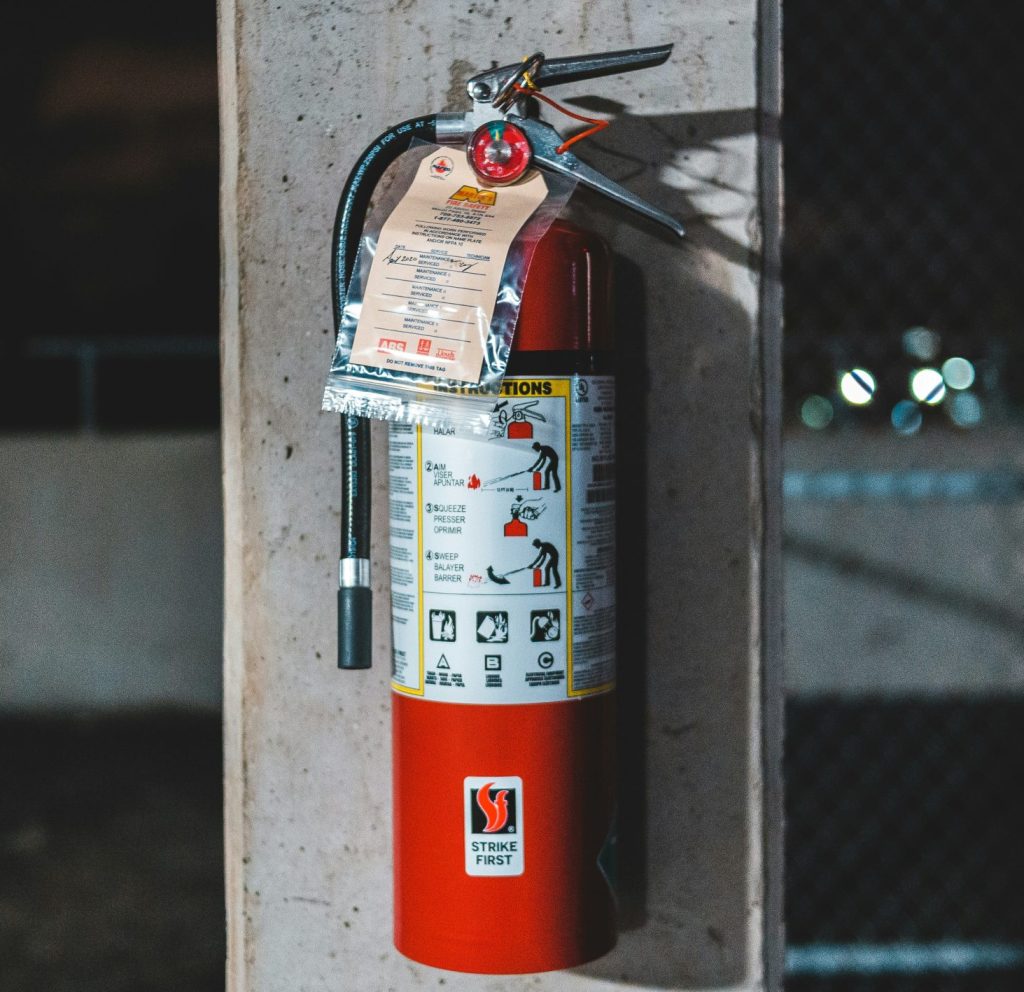Respiratory Hazards
Protecting faculty, staff, and students from occupational diseases caused by breathing air contaminated with harmful dusts, fumes, sprays, vapors, gasses, or radioactive material is best achieved by preventing atmospheric contamination through the use of engineering controls.
The University of Michigan (U-M) has developed several programs to specifically address airborne hazards that are commonly encountered on campus. The respiratory management programs detail how U-M addresses controls of exposures to contractors, workers as well as protection of the U-M community and our environment.

Lead may be a component of building materials in many campus buildings. Therefore, before any construction, renovation, or lead abatement work activities begin, all affected materials suspected of containing lead require planning for safe handling. Materials likely to contain lead include:
- Latex and oil-based paints; especially paints manufactured before 1978
- Radiation shielding materials
- Plumbing joints
- Solder
- Pipe wrap
- Materials used as soundproofing
The following construction and renovation activities involving materials containing lead may result in lead exposure:
- Sanding
- Scraping
- Cutting
- Grinding
- Welding
- Demolition
- Drilling
- Sandblasting lead-based paint or other lead-based surface coating
In accordance with the Lead Management Program guideline, employees who may disturb lead-containing material during construction and renovation activities must:
- Receive training
- Practice safe work procedures in accordance with their training
- Use the proper equipment, controls, and personal protective equipment
- Receive medical surveillance
Standard Operating Procedures, Guidelines, and Manuals
The U.S. Environmental Protection Agency (EPA) recommends that building owners develop a pro-active in-place management program rather than requiring removal of all asbestos materials. This strategy involves:
- Identifying asbestos containing materials (ACM)
- Maintaining those materials in good condition
- Removing ACM as needed during maintenance or renovation activities
The U-M proactively manages asbestos containing materials (ACM) in place following the Asbestos Management Program. The purpose of the program is to reduce or eliminate the risk of employee exposure to ACM.
Asbestos Building Surveys for Project Management and Maintenance
The Asbestos Building Surveys for Project Management and Maintenance contains survey information for architects, engineers, construction managers, and building facilities personnel for project planning and maintenance purposes. It is password protected.
Related Information
For further information on the hazards of asbestos and ACM, check out the EPA document Asbestos.
Many buildings on the U-M campus have fume hoods or other sources that exhaust potentially hazardous materials through rooftop ventilation systems that could impact employees and contractors working on those building roofs.
- For technical assistance, please contact the EHS department at (734) 647-1143.
- For specific information on the roof safety plans and access to drawings, contact AEC, A&E – O&M Engineering, Ron Crawford (734) 647-4116.
- If you need to access one of the roofs with potentially hazardous exhaust, the first step is to review the Rooftop Safety Plans and determine if an exhaust system must be shutdown. The maintenance supervisors and engineers have access to these electronic plans on the Roof Safety drive. If an exhaust must be shut down, notify the Shutdown Coordinator and describe the impact on building occupants (what exhaust systems must be shutdown, when they will be shutdown, and how long the shutdown will last). This is accomplished using the on-line Shutdown Request form. The Shutdown Coordinator will work with the Supervisor and the Building or Department Contacts to determine the least disruptive and most efficient shutdown schedule. Details are available in the Roof Access for Buildings with Potential Roof Top Hazards document. See the link below.
Standard Operating Procedures, Guidelines, and Manuals
U-M employees and contractors repair and maintain local (potentially hazardous) exhaust systems in our facilities, including:
- Chemical fume hoods
- Snorkels
- Canopy hoods
- Slot hoods
- Flammable storage cabinet exhaust systems
- Tabletop fume extractors
- Biological safety cabinets
- General exhaust systems for isolation rooms
- Rooftop exhaust units
Work on these systems may include repairs to duct work, changing exhaust fans, or changing exhaust filters; ranging from routine repairs up through full demolition activities. All of these activities require access to the potentially hazardous exhaust system’s interior surfaces. Most of the hazardous exhaust system interior surfaces contain nuisance dust, dirt, and debris from years of accumulation. However, the interior surfaces in a small number of hazardous exhaust systems may contain contaminants along with nuisance dust. Therefore, all inside surfaces should be considered contaminated and personal protective equipment should be worn to prevent exposures.
Most work will require a shutdown of the exhaust system. Notify the Shutdown Coordinator of any work requiring a shutdown and describe the impact on building occupants (what exhaust systems must be shutdown, when they will be shutdown, and how long the shutdown will last). This is accomplished using the on-line Shutdown Request form. The Shutdown Coordinator will work with the Supervisor and the Building or Department Contacts to determine the least disruptive and most efficient shutdown schedule.
Details are available in the Servicing Potentially Hazardous Exhaust systems document. See the link below.
Standard Operating Procedures, Guidelines, and Manuals
Servicing Potentially Hazardous Exhaust Systems
For More Information
For assistance, guidance, or information on referenced guidelines, regulations, and other documents, contact EHS at (734) 647-1143. For specific information on the roof safety plans and access to drawings, contact AEC, A&E – O&M Engineering, Ron Crawford (734) 647-4116.





